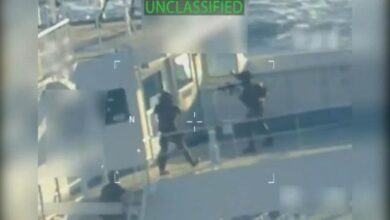Mexico: The questions that the Tlatelolco massacre left us
Half a century after the tragedy, many questions remain unanswered

On October 2, 50 years of one of the darkest moments in Mexican history was celebrated. That day of 1968, the year that was marked by the French May – in which the students of the left and the working class rebelled against the Government, prompting the largest general strike in the Gallic country – thousands of young Mexicans took to the streets of Mexico City to protest against the then President Gustavo Díaz Ordaz.
Leer en español: México: Los interrogantes que aún deja la masacre de Tlatelolco
Only 10 days remained for the inauguration of the Olympic Games, which were being held for the first time in Latin America, and the president was not willing to the increasingly numerous protests, which had been taking place since July, tarnished the most important sporting event of the world.
As the newspaper El País of Spain recalls, the germ of the protests is in the National Strike Council (CNH, by its acronym in Spanish), a delegation of students from more than 70 universities in the country that began to organize, in the months prior to the massacre, acts and demonstrations in protest against the violation of university autonomy by the Government during the summer of that year, in which the police used force to suppress concentrations against the management of Díaz Ordaz.
A 50 años de la masacre de #Tlatelolco, no puede seguir prevaleciendo la impunidad, exigimos justicia #2deOctubre pic.twitter.com/Z0VxNel6UG
— Serapaz Mexico(@SerapazMexico) 2 de octubre de 2018
The CNH began to grow until it reached 240 delegates, and while the world looked towards Mexico for the Olympic event, the students wanted to make their indignation visible with what they considered a continuous interference by the Government in their rights, and they began to demand the dissolution of the "Granaderos" (riot police), as well as the release of political prisoners and student leaders arrested during the riots of July and August.
According to BBC Mundo, the Mexican president was convinced that the student revolts – many of them fights between the young people themselves – were intended to damage the image of the country during the Olympic event.
You can also read: Coverage: This is how the Colombian State fails when protecting social leaders
This is how Díaz Ordaz used the hard hand to demonstrate that he had everything under control and could effectively quell any situation of violence. After 1968, the president acknowledged that "they had exhausted all political resources, so force had to be used."
Currently, there is no clarity about who caused the beginning of the repression. The Government always defended that among the students that were in the concentration were armed people who began to shoot against the forces of order. On the contrary, witnesses and survivors of the massacre continue to defend that what was produced was a real hunt for anyone who was not a police officer or "Granadero". That is why among the fatalities -which according to official sources did not reach thirty but could be between 300 and 400 according to later accounts of eyewitnesses- there were people who were not involved in the clashes, such as children, ordinary citizens or journalists.
Media like CNN indicate that there is a possibility that the elected president, Andrés Manuel López Obrador, could reopen the investigation of this tragedy. While making a decision, thousands of people remembered this black chapter of Mexican history with a massive demonstration through the streets of the capital.
LatinAmerican Post I José María González Alonso
Translated from "México: los interrogantes que aún deja la masacre de Tlatelolco"





